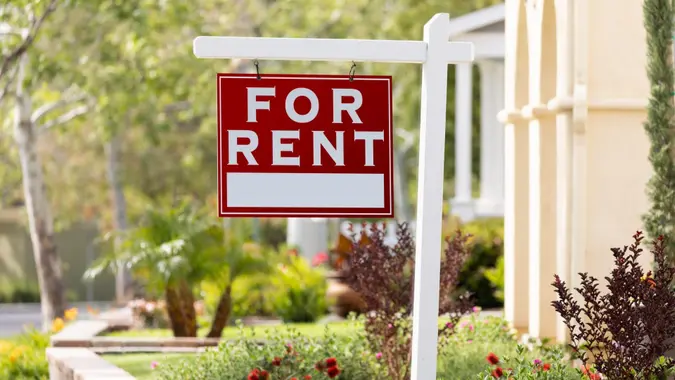What Is the ‘Extend and Pretend’ Real Estate Strategy?

Commitment to Our Readers
GOBankingRates' editorial team is committed to bringing you unbiased reviews and information. We use data-driven methodologies to evaluate financial products and services - our reviews and ratings are not influenced by advertisers. You can read more about our editorial guidelines and our products and services review methodology.

20 Years
Helping You Live Richer

Reviewed
by Experts

Trusted by
Millions of Readers
If you take out a mortgage to finance a property but fail to make monthly payments, the lender will most likely initiate foreclosure to recover some of its money. However, in some cases, especially in the commercial real estate space, banks may be willing to grant extensions to borrowers by adopting the “Extend and Pretend” strategy.
Here’s a dive deep into how this approach works, its potential consequences and whether it genuinely offers a viable solution or merely masks deeper issues in the commercial real estate market.
How Does the ‘Extend and Pretend’ Strategy Work?
Also known as “kicking the can down the road,” the “Extend and Pretend” strategy is used by lenders in commercial real estate to defer risks or costs into the future. By refusing to write down distressed underwater mortgages and giving business borrowers extra time to repay their loans, banks “extend” their inevitable losses by “pretending” everything is fine and ignoring short-term valuations.
It’s difficult to give a precise number on the popularity of this strategy in commercial real estate today. However, it’s reported that many lenders turned to this strategy to keep themselves afloat during the 2008 global financial crisis and the economic downturn caused by the COVID-19 pandemic in March 2020.
Sure, by adopting the “Extend and Pretend” strategy, some lenders may be able to hold on long enough for the business borrowers to secure their next mortgage. But what happens if that’s not the case? What happens when the lenders cannot afford to keep extending the loan terms anymore? Is this strategy sustainable enough to weather the storms of the commercial real estate market, or is it a ticking time bomb waiting to go off?
Is the ‘Extend and Pretend’ Strategy a Good Idea?
While critics see the “Extend and Pretend” strategy as a temporary cosmetic patch that fails to address the underlying issues, the strategy did prove successful for some lenders during the economic downturn of 2008.
By waiting out the market and sweeping reality under the rug instead of demanding loan repayments during the onset of the financial crash, the “Extend and Pretend” strategy allowed some lenders to take back properties from borrowers when the prices began to recover and avoid suffering as hard of a financial hit.
However, just because a strategy worked once does not mean it will always work in the long term. Though extending and pretending could be wise in some cases, it ties up capital that could otherwise be used to offer new loans, resulting in a stagnant market. Plus, regulators could impose stricter lending standards in the future, making it increasingly difficult for lenders to kick the can down the road when faced with economic challenges.
What’s the Verdict?
In short, while the “Extend and Pretend” strategy could help some lenders minimize losses by avoiding foreclosure or selling undervalued properties at a loss, it’s likely not a sustainable solution.
By leaving bad debt on their books and pretending that everything is going according to plan, lenders are creating a massive backlog of toxic loans that will eventually have to be dealt with once the smoke clears and the economy doesn’t improve.
More From GOBankingRates
 Written by
Written by  Edited by
Edited by 

























